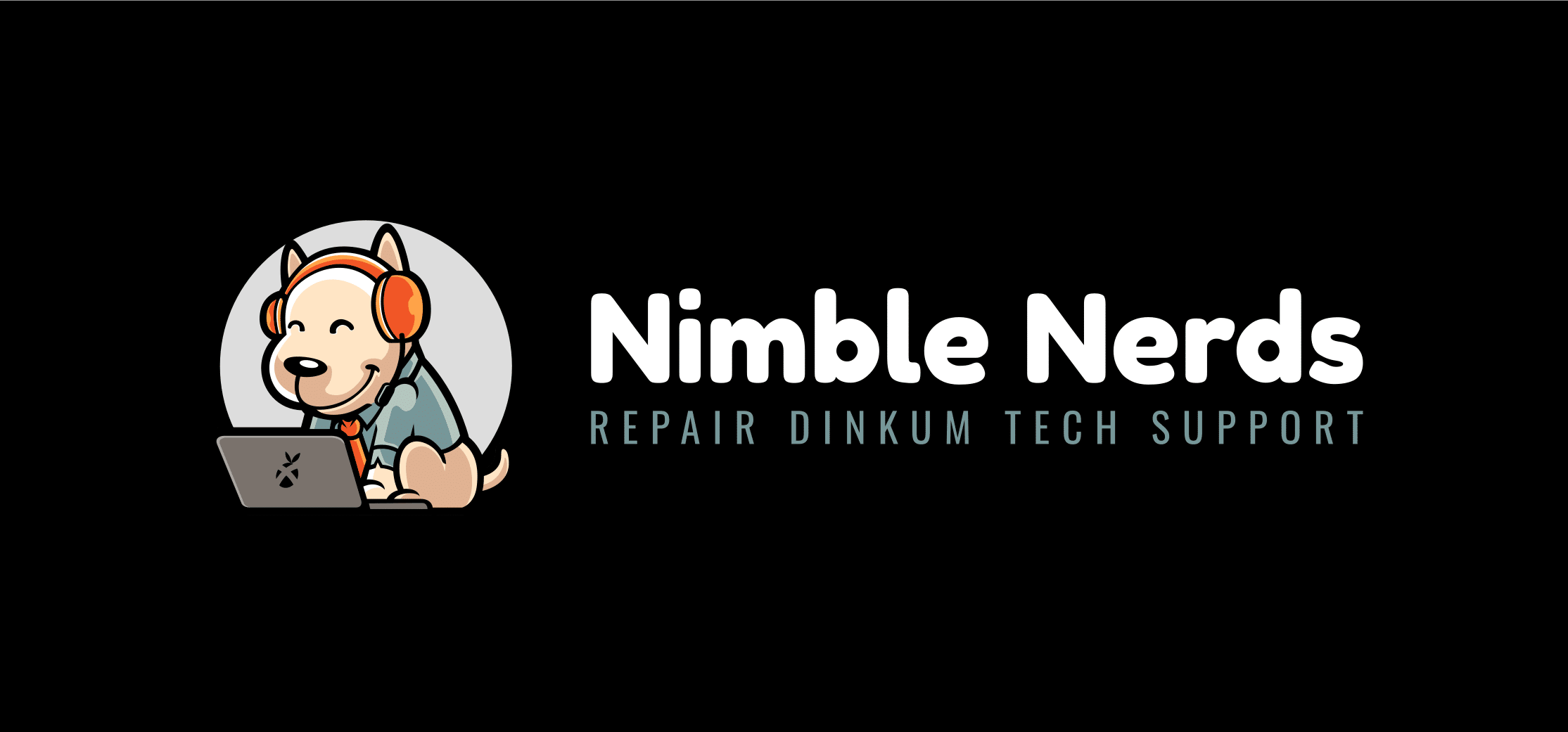File Recovery: Retrieve Your Lost Data Quickly and Efficiently
File loss can happen to anyone—whether it’s due to accidental deletion, system crashes, or a virus attack. Losing your important documents or cherished photos can be incredibly frustrating, but don’t worry! At Nimble Nerds, we specialize in fast and secure file recovery, ensuring your data is retrieved safely and efficiently.
Whether you’ve lost an important work file or personal data, we’re here to help. Call us now to speak with a friendly receptionist, and within 30 minutes, one of our experienced technicians will contact you to discuss how we can recover your files, provide a transparent cost estimate, and offer insight—all with no obligation.
20+ Years In Business
No Same Day Surcharges
Rapid Response Times
Tailored Tech Solutions
Guaranteed Satisfaction
It's Been A Privilege To Support:










Every Job: Planting Seeds, Uplifting Lives:
Trees planted w/ Greenfleet, TeamTrees & Dragon Dreamers
Lost more than just a file? We handle full-scale data recovery — including drives, devices, and deleted data — with expert support across Sydney.
View Our Full Data Recovery Services
Understanding File Recovery: What Is It and Why Do You Need It?
File recovery is serves as a safety net- and it’s more than what you think. It’s the process of retrieving lost, deleted, or corrupted files from your storage devices, whether that’s your computer’s hard drive, a USB, or even an SD card. And trust me, the moment you realize you’ve lost something important—like the presentation you worked on all night—panic sets in fast. But that’s exactly why data recovery tools exist, to pull your data back from the brink when disaster strikes.
Most of the time, data loss happens because of simple mistakes. Accidentally deleting a file? We’ve all been there. You drag something into the Recycle Bin and empty it, only to realize seconds later that it wasn’t a throwaway file. Or maybe your system crashes out of nowhere, leaving you wondering if your files went down with it. Then there are hardware failures—your hard drive just decides it’s had enough, and suddenly, all your data is out of reach. Viruses can also be nasty culprits, corrupting or outright deleting your files before you even know what’s happening.
This is where a proactive recovery plan saves you. Sure, data recovery tools and techniques can help, but the best strategy is to prevent the problem in the first place. Regular backups, whether on an external drive or the cloud, are like insurance for your data. If disaster strikes, you won’t need to scramble for recovery options—you’ll have your data safe and sound somewhere else. But in the absence of that? Don’t worry, file recovery techniques can still help bring your files back to life.
Individual File Recovery vs. Drive Recovery: Key Differences
Data loss recovery processes are different for every situation. Sometimes you’re only trying to recover one or two files—maybe that spreadsheet you were working on just disappeared after a system crash. Other times, you’re dealing with the nightmare scenario where an entire drive fails, and you need to recover everything. Understanding the difference between individual file recovery and full drive recovery can save you both time and stress when disaster strikes.
Individual file recovery usually happens when you’ve accidentally deleted a file or maybe lost access due to minor corruption. Ever delete a file and then realize you needed it five minutes later? If you’re lucky, the Recycle Bin or the Trash folder has your back. But if it’s more complicated—like a file that got overwritten, or the Recycle Bin was emptied—you’ll need specialized software to restore deleted files. Tools like Recuva or EaseUS can scan your drive for “lost” files that haven’t been overwritten by new data yet. It’s a quick fix and often solves the problem with minimal effort.
Drive recovery, on the other hand, is a whole different ballgame. This is for those more severe cases where the entire drive has failed, your computer refuses to boot, or the operating system is so corrupted that you can’t access anything. In situations like these, the goal is to recover as much data as possible from the entire drive, and this requires more heavy-duty solutions, often involving professional recovery services if the hardware itself is physically damaged.
In short, recovering a few lost files is usually a quick process that can be handled with software, but when it’s the whole drive on the line, things get more complicated and may even require sending the drive to a specialist.
Some Of Our Customer Compliments:

Best Practices for Recovering Deleted Files
So, you’ve accidentally deleted a file—first, don’t panic. Here are some of the best methods to get those lost files back without breaking a sweat.
Check the Recycle Bin First
Use Windows File History or Restore Points
Recover Files from External Storage
Recommended File Recovery Tools

Hardware Methods for File Recovery When Your Machine Won’t Boot
When the computer refuses to boot, the stakes are high, especially if it got crucial data trapped inside. But that doesn’t mean the files are lost forever. With a few handy tools and methods, you can still access your data without needing the system to boot. Let’s walk through some of the best hardware methods to recover files from a dead computer.
M.2 to USB Enclosure: File Reovery from SSDs
If your machine uses an M.2 SSD (common in newer laptops and desktops), you can still access your files by using an M.2 to USB enclosure. Essentially, this enclosure converts your internal SSD into an external drive that you can connect to another computer. It’s like giving your SSD a new lease on life, even if the rest of the system won’t cooperate.
Here’s how it works: You remove the M.2 SSD from your dead machine, carefully insert it into the enclosure, and then plug it into another working computer via USB. That computer will recognize the SSD as an external drive, and you should be able to browse and copy your files from it just like you would with any external storage device.
Tip: Make sure to handle your SSD carefully, and double-check that the enclosure you’re using is compatible with your SSD’s format (NVMe or SATA).
SATA to USB Adapter: The Lifeline for HDD and SSD Users
For those with a traditional SATA HDD or SSD, a SATA to USB adapter is your best friend. These adapters are super versatile and can connect almost any internal SATA drive to another computer via USB. It’s a great option if your system won’t boot but the hard drive is still functional.
To get started, open up your computer, remove the SATA drive, and plug it into the SATA to USB adapter. Then, connect the adapter to another computer via USB. Once connected, the drive should show up in File Explorer, allowing you to transfer all your important files before your old drive finally gives up.
Pro Tip: If the drive isn’t showing up right away, try connecting it to another USB port or even switching computers. Sometimes older drives can be a bit finicky with newer adapters.
Bootable Linux Drive: A Sneaky Way Around Boot Failures
If you’re not comfortable opening up your computer to remove drives, there’s another option: a bootable Linux USB drive. This method lets you bypass the non-booting Windows system entirely and access your files through Linux, which can often run smoothly even when Windows won’t.
Creating a bootable Linux USB drive is easier than it sounds. You just need to download a Linux distribution (like Ubuntu or Kali Linux), create a bootable USB drive using tools like Rufus, and then boot your dead computer from the USB. Once Linux is running, you can access your files directly from the internal drive and copy them to an external drive. Tools like TestDisk or PhotoRec within Linux can also help recover lost or corrupted data.


File Recovery: Dealing with BitLocker Encryption
Now, if your drive is encrypted with BitLocker, things can get tricky. While the hardware methods mentioned above still apply, you’ll need the BitLocker recovery key or password to access the data. If you don’t have the recovery key handy, unlocking the drive may be next to impossible, and even professional services might struggle to recover the encrypted data.
Before proceeding with any hardware recovery attempt, make sure you have the BitLocker key. If you do, follow the same steps as above (using an enclosure or adapter), and you’ll be prompted to enter the key when trying to access the drive.
Hardware recovery is a lifesaver when your system won’t boot, but remember—encrypted drives require that extra step. Always keep your BitLocker key stored somewhere safe!
How to Use ShadowExplorer for File Recovery
When it comes to recovering lost or modified files, sometimes the answer lies in your system’s hidden backup copies. Windows automatically creates “Shadow Copies” of your files, which can be a lifesaver after accidental deletions or unwanted changes. If you haven’t been actively backing up your files, ShadowExplorer gives you a second chance to recover those lost gems, without needing any special software—just what’s already built into Windows.
What Is Shadow Explorer?
Step-by-Step Guide to Using ShadowExplorer for File Recovery
Here’s how to get started with ShadowExplorer:
- Download and Install ShadowExplorer: Head over to the ShadowExplorer website and download the tool (it’s lightweight and quick to install). It works with most Windows versions, including Windows 10 and 11.
- Select a Restore Point: Once you open ShadowExplorer, you’ll see a simple interface where you can choose a restore point. These points are dates when shadow copies were created. Pick the restore point that predates your file loss.
- Navigate to Your File: In the file tree, browse to the folder where your lost file was originally located. ShadowExplorer shows the contents of that folder as they appeared on the date of the restore point.
- Recover Your File: Right-click the file you want to recover and select “Export.” Choose a location to save the recovered file (preferably on an external drive or somewhere safe), and voila! You’ve just rescued your lost file from the shadows.

When Is ShadowExplorer Most Effective?
Maximizing File Recovery from Shadow Storage


Step-by-Step Guide to Using Data and File Recovery Software
When file recovery tools like ShadowExplorer or basic methods like the Recycle Bin don’t cut it, data recovery software is your next go-to. These tools are designed to scan your storage devices for deleted, corrupted, or inaccessible files, making the recovery process a whole lot easier. Let’s walk through a step-by-step guide on how to install, use, and maximize the potential of free data recovery software here.
Step 1: Choose the Right Data Recovery Software
Step 2: Install the Software on a Different Drive
Step 3: Run a Basic Scan
Step 4: Use Deep Scan Mode for Thorough Recovery
Step 5: Recover Your Files
Step 6: Consider File Formats and Systems
File Recovery: Key Considerations
- File integrity: Not all recovered files are perfect. Some may be corrupted beyond repair. Pay attention to file health indicators in the recovery software.
- File systems: Understand what file system your drive uses (e.g., NTFS, FAT32, exFAT).
- Storage device: The type of storage matters. Recovering data from HDDs versus SSDs or USB drives may require different techniques.
Using data recovery software might seem daunting, but by following these steps, you can often recover lost files without the need for professional help.


Understanding Ransomware and How to Recover Files After an Attack
Ransomware—it’s one of the scariest threats in the world of cybersecurity. The idea that cybercriminals can lock you out of your own files and demand a ransom to get them back is enough to make anyone panic. But before you consider paying up, let’s explore what ransomware is, how you can recover your files, and—most importantly—how to avoid paying those criminals at all.
What Is Ransomware?
Recover Deleted Files After a Ransomware Attack
1. Restore from Cloud Backups (OneDrive and Google Drive File History)
- OneDrive: If your files have been affected by ransomware, OneDrive’s file history allows you to recover previous versions. Just log into your OneDrive account, right-click the affected file or folder, and select “Version history.” You’ll see a list of earlier versions to restore. Additionally, OneDrive has a Ransomware Detection feature for Office 365 subscribers, which will notify you if ransomware is detected and help you restore files in bulk.button: onedrive file history
- Google Drive: Similarly, Google Drive offers a version history feature. Open your Google Drive, right-click the file, and select “Manage versions.” You can then restore a previous, uninfected version of the file. It’s quick and, in many cases, can restore your documents and files without a hassle.
- Dropsuite: For businesses, Dropsuite provides robust cloud backup and recovery solutions, including file versioning. If your business data has been locked by ransomware, Dropsuite allows you to restore earlier, clean versions of your files from its backup service. With scheduled backups and file history, it’s an ideal option for companies looking to recover from ransomware without losing crucial data.


2. ShadowExplorer to the Rescue
3. Free Decryption Tools
If your ransomware strain has a decryption tool available, you can often recover your files without paying anything. Just download the tool and follow the instructions to decrypt your data.
4. Wipe and Restore
Preventing Future Ransomware Attacks
While recovering from ransomware is possible, preventing it is always better. Here are some best practices to protect yourself from future attacks:
- Regular Backups: Make frequent backups of your files, either through an external hard drive or cloud services like OneDrive and Google Drive. Ensure file history is enabled on both platforms so that you have previous versions of your files to roll back to in case of an attack.
- Antivirus and Anti-Malware Software: Keep your antivirus and anti-malware software updated to catch ransomware before it has a chance to encrypt your data.
- Email Caution: Be cautious with email attachments and links, especially from unknown senders. Many ransomware infections start with phishing emails.
- Security Updates: Regularly update your operating system and software to patch vulnerabilities that ransomware exploits.
- User Awareness: Educate anyone using your network about the dangers of ransomware and encourage safe browsing habits.
Ransomware attacks can be devastating, but with the right precautions and recovery methods—like cloud backups, ShadowExplorer, or decryption tools—you can recover your data without giving in to ransom demands.


Preventing Future Data Loss: Configuring Shadow Storage and Backup Solutions
Setting Up Automatic Backups with Cloud Services
First off, automating backups is a lifesaver. Whether you’re a business or a home user, cloud backup solutions like OneDrive, Google Drive, and Dropsuite should be part of your data protection strategy. By setting these up, your important files will always have copies stored securely online, available whenever you need them.
- OneDrive and Google Drive: These services allow you to enable automatic syncing of specific folders (like Documents, Desktop, or Pictures) so any changes to your files are backed up in real-time. Not only does this ensure you’ll always have a recent version of your files, but both services offer file version history, which stores multiple versions of each document. This is a great safety net if your files are accidentally overwritten or deleted.
- Dropsuite: Dropsuite is perfect for businesses as it offers more comprehensive backup and recovery solutions. This ensures all your files, emails, and databases are protected. With backups that run automatically in the background, frequent backups are scheduled and interruptions are avoided in your workflow. And, like the other cloud services, it keeps a history of file versions, letting you restore to an earlier, clean version if something goes wrong.
Increasing Shadow Storage in Windows
- Open Command Prompt as an administrator.
- Type the following command:
- vssadmin resize shadowstorage /for=C: /on=C: /maxsize=20GB
- Replace C: with the drive letter you want to allocate more space to, and adjust the 20GB limit based on your needs.
Configuring File History and System Restore
To further protect your data, make sure File History and System Restore are enabled:
- File History: This feature automatically backs up copies of your files on an external drive or network location. Furthermore, it’s perfect for restoring previous versions of modified or deleted files. To enable File History, go to Settings > Update & Security > Backup, and choose an external drive to store your backups.
- System Restore: Enabling System Restore ensures that Windows takes regular snapshots of your entire system, including your files and settings. This can be a lifesaver in the event of a system crash or corruption, allowing you to restore your PC to a previous working state. Go to System Properties > System Protection, and ensure protection is turned on for your system drive.


Creating Disk Images for Complete Data Protection
Best Practices for Data Loss Prevention
To wrap it all up, here are a few best practices to keep in mind:
- Regularly test your backups: Check that your backup systems are functioning correctly by restoring files to verify everything works from time to time.
- Keep multiple backups: Store one backup in a different external drive and another in the cloud.
- Protect against malware: Use up-to-date antivirus software to guard against ransomware and viruses that could destroy your files.
- Practice safe email and internet habits: Don’t open suspicious attachments or click on unknown links—this is a common way malware gets onto your system.
With these systems in place, you’ll never have to worry about losing your files to accidental deletions, corruption, or malware again.
Conclusion
File recovery can be a bit of a tedious job and a nerve-wracking experience, but with the right tools and knowledge, it doesn’t have to be complicated or overwhelming. In addition, you can recover lost files or deleted files quickly, and more importantly, take steps to prevent future data loss. Whether you’re restoring deleted files with a few clicks, digging into deep scans with powerful recovery software, or relying on cloud backups like OneDrive, Google Drive, and Dropsuite, there’s always a way to bring your data back from the brink.
Proactive File Recovery
The key is being proactive. By setting up regular automatic backups, increasing your system’s shadow storage, and protecting yourself with antivirus software, you can avoid the most common data loss disasters. At Nimble Nerds, we specialize in helping you navigate these issues with ease—whether it’s recovering files after a ransomware attack or simply restoring that accidentally deleted presentation.
Don’t wait for data loss to happen. Set up your backups, configure your shadow storage, and take control of your file safety today. And if you’re already in the middle of a data crisis, reach out to us for a no-obligation consultation. We’ll get your files back and set you up with a system that ensures you never have to stress about it again.

- Service Coverage: All of Greater Sydney City
- Service Hours: Monday to Friday, 9 AM to 6 PM
- Emergency Services: 24/7 Critical Response Support
- Warranty: 30-day guarantee on all repairs
- Same Day Service At A Reasonable Price
Get In Touch
On-Site Computer Repairs Sydney Wide Services
- Canterbury-Bankstown
- Eastern Suburbs
- Hawkesbury
- Hills District
- Inner West
- Liverpool
- Lower North Shore
- Macarthur
- Northern Beaches
- Northern Suburbs
- Parramatta
- St George
- Sutherland Shire
- Upper North Shore
- Sydney CBD
- Western Sydney
Please Call To Book A Sydney Computer Repairs Sydney Technician
Lvl 17/9 Castlereagh St, Sydney,
NSW 2000, Australia
(+61) 02 8091 0815
info@nimblenerds.com.au
Social Links To Stay On The Tech Cusp - Please Give Us A Follow If You Like!
FAQs:
How do I recover my files?
To recover deleted files, start by checking your Recycle Bin or using built-in tools like Windows File History. If those don’t work, third-party recovery software like EaseUS or Disk Drill can scan your drive for recoverable files.
How can I recover permanently deleted files?
For permanently deleted files, try using advanced data recovery software. These advanced data recovery tools can scan deep into your drive and retrieve files that have been deleted from the Recycle Bin.
Is Windows File Recovery free?
Yes, Windows offers a free file recovery tool called Windows File Recovery, which can help you recover lost files through command-line usage. It’s basic but effective for simple recoveries.
How can I recover my data for free?
You can recover data for free using built-in features like File History, ShadowExplorer for shadow copies, or free recovery software like Recuva. However, free tools may be limited, and for severe cases, premium software might be needed.

